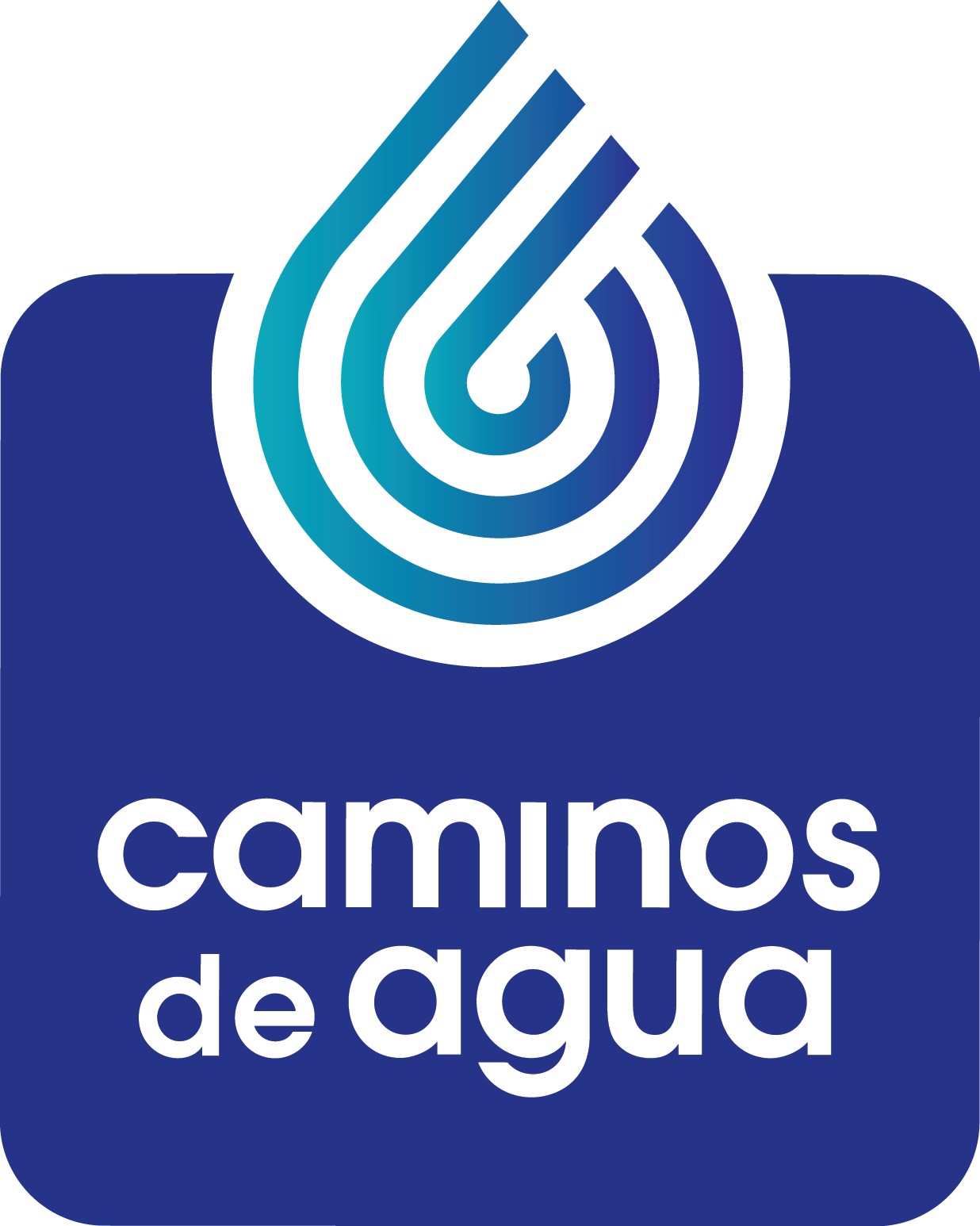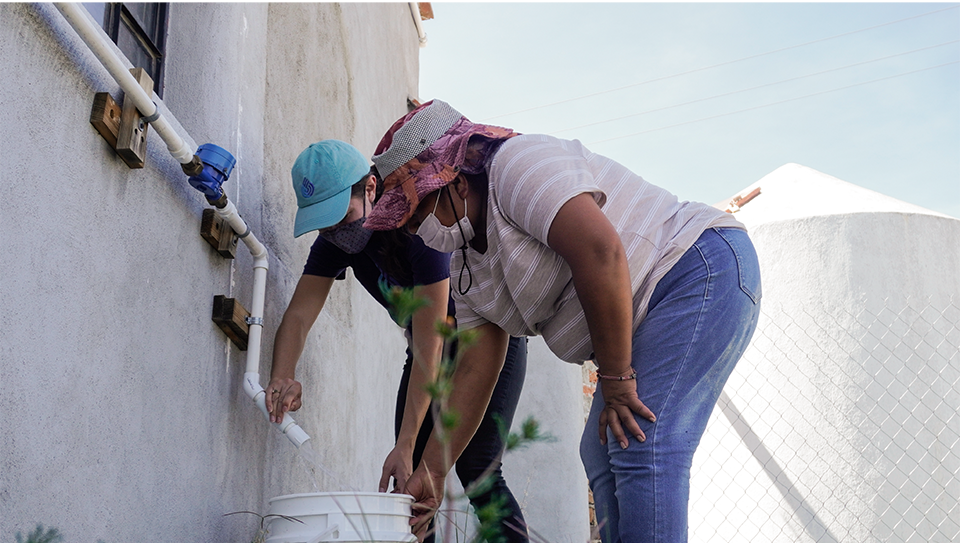All About Our Exciting New Groundwater Treatment System
Photo: Caminos de Agua's first Ground Water Treatment System (GTS) to remove arsenic and fluoride, located close to the community of Los Ricos.
by Dave Barrett
Background
The Upper Río Laja aquifer, the main source of water for San Miguel and more than 680,000 people throughout the greater region, is over-exploited and diminishing between 2-3 meters per year – an absolute brutal over-extraction of our groundwater resources. The primary culprit, responsible for nearly 85% of the water usage, is big agriculture, growing water-intensive crops for export to international markets. As our water table drops, wells are drilled deeper and deeper. The water at those depths is contaminated with naturally-occuring arsenic and fluoride at very dangerous levels, which are closely tied to dental and crippling skeletal fluorosis, cognitive development and learning disabilities in children, chronic kidney disease, and a host of cancers. Arsenic is specifically linked with skin and gallbladder cancers and associated with many more.
Arsenic and fluoride are odorless, colorless, and completely dissolved in water, which means they are extremely difficult to remove. There are simply no low-cost, commercially-available methods to deal with these contaminants that are appropriate for those most at risk.
Recognizing the need for a low-cost, environmentally-sustainable solution, Caminos de Agua (Caminos) began researching and designing a system to effectively treat groundwater for arsenic and fluoride.
Photo: Allie Reiling, Caminos de Agua’s Director of Technology, together with a community leader opening the outlet of the Ground Water Treatment System "Pilot 2" in the community of Los Ricos.
Breakthrough
After six years of intensive development, Caminos has designed a Groundwater Treatment System (GTS) that will effectively produce safe and healthy drinking water with a focus on removing arsenic and fluoride. Our staff engineers and more than 20 engineering volunteers and technical fellows helped bring GTS to fruition over the years – spending thousands of hours building and testing experimental prototypes in our lab as well as developing and producing our own filtration media to remove fluoride.
Today, Caminos has succeeded in designing a full-scale pilot system that is easy to build and operate and costs just over USD$1,000 in initial materials. When you consider that it can provide water to 10-15 families at about the same cost as installing one rainwater harvesting system that serves just 1-2 families, it’s easy to see the huge advantage GTS represents.
Allie Reiling, Caminos’ Director of Technology, says,
“You can think of it as a mini-water treatment plant, not entirely unlike ones used for large municipal water systems around the world. But this one is scaled to serve small rural populations at very low cost, is very easy to build and use, and it specifically targets arsenic and fluoride. That’s what makes it innovative.”
We have successfully completed a year-long trial with a local spirulina farmer, and we are now in the midst of our first full-scale pilot system trial in a rural community, Los Ricos, that faces water deprivation and excessive levels of arsenic and fluoride contamination.
Photo: Allie (blue hat) from Caminos de Agua together with a community leader reviewing the treatment steps of the Ground Water Treatment System in the community of Los Ricos.
Los Ricos
The families in the upper part of Los Ricos currently receive water that is pumped from a well very far away. The water arrives infrequently and at unpredictable times. Worse, the water that comes from the well is heavily contaminated with arsenic and fluoride.
One resident, Doña Isabel, who is in her 30’s and has young children, has had to stop working because the pain she suffers from in her bones (likely due to skeletal fluorosis) is too severe for her to walk to the bus stop any longer. She is an eager participant in the Caminos GTS project because she says she doesn’t want her two-year-old daughter to suffer the same fate. Another mother reports that her young child is already experiencing irreversible dental decay, which the dentist attributes to the water. Purchasing bottled water or having potable water trucked in is not an option for these families either, as they simply can’t afford it.
Now, a few months into this year-long Pilot 2 Phase, the system is providing 300 liters of drinking water per day to 10 families, or about 50 people, in Los Ricos. The Caminos team is closely monitoring the system and testing the water on a daily basis. This Pilot 2 Phase will allow the team to fine-tune the technology for optimum results, and also allow time to work out many details with the community about how best to organize themselves to use and maintain the system going forward. And, as with all of Caminos’ technologies, there is much attention paid to ensuring compliance with government regulations.
Photo: Eammon Ridgely, a Caminos de Agua Technical Fellow from Bristol, UK, taking water samples from the GTS in Los Ricos.
What's Next
Following the successful completion of Pilot 2, we hope to be able to roll out GTS to more communities in need. The success of this system implies profound and wide-reaching positive consequences on the health and well-being of communities throughout our region because what makes GTS truly innovative is the fact that it can be designed, like a recipe, to meet a given community’s arsenic and fluoride levels while also being scalable to meet their population size, whether that be 10 families or 1,000 families.
But, Reiling cautions that it shouldn’t be regarded as “a silver bullet, that will solve all the water issues we face in our region. There is still much to be figured out, particularly on how GTS will be organized and function within any given community. But the potential for GTS to have a significant impact is real. We would essentially be providing rural communities with the tools, the training, and the knowledge to improve their own water conditions. That’s pretty powerful.”
Visit our website to learn more about how GTS works, the different filtration medias we use (one of which we make ourselves!), and our innovative “lead-lag” design we developed in collaboration with Dr. Josh Kearns at North Carolina State University.
Photo: Matthieu Carriere, Caminos de Agua's Research and Development Coordinator, explaining the GTS process to visitors from the UNAM of San Luis Potosi.
Want more La Gota?
Our last issue of La Gota covered our biggest community rainwater harvesting and sanitation project to date. Next month's issue will look at the impact we are making in Southern Mexico with our Aguadapt water filters. Learn more and read past issues of La Gota here.






